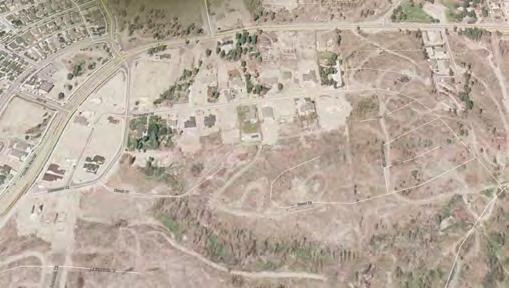Regardless of the fraction of personal injury claims that are legitimate, the actual cost to PG&E may average over $52,000 per claim (Personal Injury San Diego 2020; median, factored by 1.35 for inflation and 1.25 for currency exchange). With 100 times as many personal injuries as wrongful death claims, the implication is that PG&E may ultimately pay $1.5 billion for 28,000 personal injury claims because of 14,343 housing units damaged or destroyed, or two personal injury claims and $105,000 in personal injury payments per housing-unit ignition. The figure of $1.5 billion represents about 9% of PG&E’s total $20 billion budgeted for its fire victim trust fund for victims of the 2015 Butte, 2017 North Bay, and 2018 Camp Fires, of which the Camp Fire represents 63% of total claims. The Chico Enterprise-Record (2018) used data provided by Butte County to map the locations where 53 positively identified victims of the Camp Fire died. Of the 53 victims, 32 died inside a residence, 11 outside a residence, eight in vehicles, one under a vehicle and one at a Sacramento hospital. All but the last death occurred inside the fire perimeter, suggesting that they died because they failed to evacuate. The Butte County Sheriff’s Office provided a large, but still partial, list of 84 Camp Fire deaths (Brekke 2019). The victims’ ages seem noteworthy. None were younger than 20 years old, six were aged 20 to 49, and six were aged 50 to 59. The median age of victims was 72, about twice the median age of Butte County residents. Butte County Social Services attributes many of the deaths to the speed of the fire, residents’ ages, demographics, disabilities (residents tend to have a higher chance of having one or more disabilities), and possibly inadequate communication planning and implementation (Bizjak et al. 2019). The Multi-Hazard Mitigation Council (2019) uses the number of severe non-fatal injuries as a proxy for the instances of post-traumatic stress disorder (PTSD), drawing on Sutley et al. (2017a, b). The Multi-Hazard Mitigation Council (2019) also suggests the following acceptable costs: $13,000,000 to avoid statistical deaths, $5,100,000 for injuries, and $125,000 for instances of post-traumatic stress. These values are taken from the Multi-Hazard Mitigation Council (2019, Table 4-35), inflated at 2% per year and converted to Canadian dollars with a 1.25 CAD/USD currency conversion factor. Matz et al. (2020) examine health impacts from fire particulate matter in Canada’s wildfire smoke from 2013 to 2018. They estimate annual premature mortalities of approximately 100 deaths attributable to short-term exposure and 1,000 deaths attributable to long-term exposure, as well as many non-fatal cardiorespiratory health outcomes. They do not attempt to distinguish the effects of fine particulates from burning vegetation versus those produced by burning houses. It seems likely that the houses account for less than 1% of the particulates, possibly 0.1% or less. This is important because the National WUI Guide would probably affect the amount of fine particulates produced by burning houses, but not by burning vegetation. 2.8 Additional living expenses and business interruption losses Insurers commonly estimate the value of additional living expenses for fire insurance of homes to be 10% of the building replacement cost. Alternatively, the Multi-Hazard Mitigation Council (2019) estimates the cost of additional living expenses to be approximately $110 per household per day. The two values agree if a household in a house with a $500,000 replacement cost is displaced for 12 to 18 months, which seems plausible. Indirect business interruption was taken as $0.47 per $1.00 of direct time-element loss, i.e., $52 per household per day.
17








